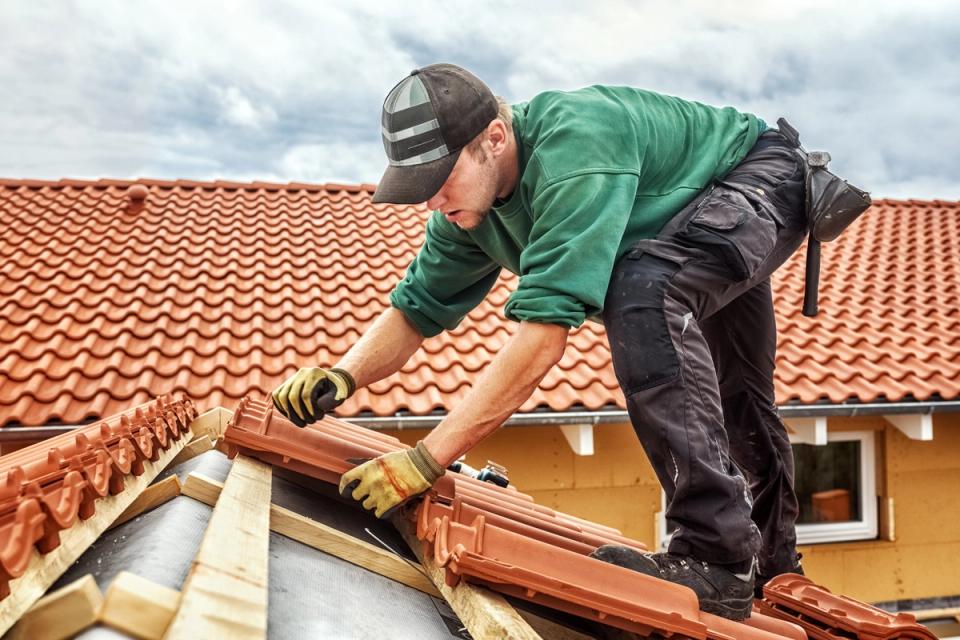
Choosing the right roofing material is a crucial decision for homeowners seeking both durability and aesthetic appeal. Traditional tile and natural slate are two roofing options celebrated for their longevity, beauty, and resilience. While both materials offer excellent protection and an elegant look, they differ in cost, maintenance, and installation complexity. This guide explores the advantages and disadvantages of each, helping homeowners make an informed decision when investing in a roofing project.
Why Consider Tile or Slate Roofing?
Upgrading a roof is not only a structural necessity but also an opportunity to enhance a home’s visual appeal and market value. Tile and slate roofs provide a timeless look that complements various architectural styles, from Mediterranean and Spanish influences to Colonial and Tudor designs.
These materials also boast impressive durability, far outlasting traditional asphalt shingles. For homeowners looking to reduce maintenance costs and improve energy efficiency, tile and slate present excellent long-term solutions. Additionally, both materials contribute to sustainability by reducing landfill waste associated with frequent roof replacements.
Traditional Tile Roofing: A Durable and Stylish Option
Tile roofing has been used for centuries and remains a popular choice for homes in warm and coastal climates. These tiles, typically made of clay or concrete, are well-suited for regions with high sun exposure and minimal freeze-thaw cycles.
Pros of Tile Roofing:
- Longevity: Properly installed tile roofs can last 50 to 100 years, significantly outlasting asphalt shingles.
- Weather Resistance: Tile is highly resistant to fire, insects, and extreme weather conditions, including high winds.
- Energy Efficiency: The natural air circulation beneath the tiles helps regulate indoor temperatures, reducing energy costs.
- Sustainability: Clay and concrete tiles are made from natural materials and can often be recycled.
- Variety of Styles: Available in a range of shapes, colors, and finishes to complement different architectural designs.
Cons of Tile Roofing:
- Weight Considerations: Tiles are heavy and may require structural reinforcement before installation.
- Fragility: While durable, individual tiles can crack if stepped on improperly or struck by heavy debris.
- Higher Initial Cost: The upfront cost is more expensive than asphalt shingles, including materials and labor.
- Complex Installation: Requires skilled labor, increasing installation costs and time.
Natural Slate Roofing: A Premium and Long-Lasting Solution
Slate roofing is one of the most durable and aesthetically refined options available. Made from natural stone, slate provides a sophisticated appearance and exceptional longevity, making it a preferred choice for luxury homes.
Pros of Slate Roofing:
- Exceptional Lifespan: A well-maintained slate roof can last 75 to 200 years, making it one of the longest-lasting roofing materials.
- Unmatched Durability: Slate is resistant to fire, rot, and pests, making it a highly reliable roofing choice.
- Timeless Elegance: The natural variations in color and texture create a visually stunning and unique look.
- Sustainability: Slate is a natural material with minimal environmental impact and can be repurposed.
- Low Maintenance: Requires minimal upkeep compared to other roofing materials.
Cons of Slate Roofing:
- Expensive Installation: Slate is among the most costly roofing materials due to its labor-intensive installation process.
- Weight Issues: Like tile, slate is heavy and may necessitate additional structural support.
- Limited Availability: Finding replacement slate pieces can be challenging, especially for older or rare varieties.
- Brittle Nature: Although durable, slate can break under heavy impact or if handled improperly.
Cost Comparison and Return on Investment
Although tile and slate roofs have higher initial costs than asphalt shingles, their extended lifespan and durability make them a worthwhile investment.
- Tile Roofing Costs: Ranges from $10 to $30 per square foot, depending on material type (clay vs. concrete) and complexity.
- Slate Roofing Costs: Typically costs between $20 to $40 per square foot, reflecting its premium nature and labor-intensive installation.
Despite the higher upfront costs, these roofing materials provide excellent return on investment. Their longevity reduces the need for frequent repairs and replacements, ultimately saving homeowners money over time. Additionally, their energy efficiency can lead to lower utility bills, further enhancing their financial benefits.
Which Roofing Option is Best for Your Home?
- Choose Tile Roofing If: You live in a warm climate, want a durable yet visually appealing roof, and have a structurally sound home to support the weight.
- Choose Slate Roofing If: You seek a high-end, long-lasting roofing material that offers a natural and refined appearance, withstanding decades of wear with minimal maintenance.
Both options enhance a home’s curb appeal and resale value, making them attractive choices for homeowners looking for premium roofing solutions.
Getting Professional Estimates
Consulting professional roofing contractors is critical for determining the best material for your home. They can assess your home’s structural capacity, climate conditions, and budget to recommend the best option. Obtaining multiple estimates allows homeowners to compare costs, warranties, and installation methods before making a final choice.
Additionally, professionals can help identify potential structural modifications needed to support the weight of tile or slate, preventing costly issues down the road. A well-informed decision ensures a smoother installation process and long-term satisfaction with the roofing investment.
Final Considerations
Both tile and slate roofing offer homeowners a high-quality, long-lasting solution with timeless aesthetic appeal. While tile provides versatility and energy efficiency, slate stands out for its unmatched durability and premium look. Additionally, both options contribute to sustainability by reducing waste associated with frequent roof replacements.
Ultimately, the right choice depends on budget, architectural style, and long-term maintenance preferences. By investing in professional installation and quality materials, homeowners can enjoy a beautiful and resilient roof for generations to come.